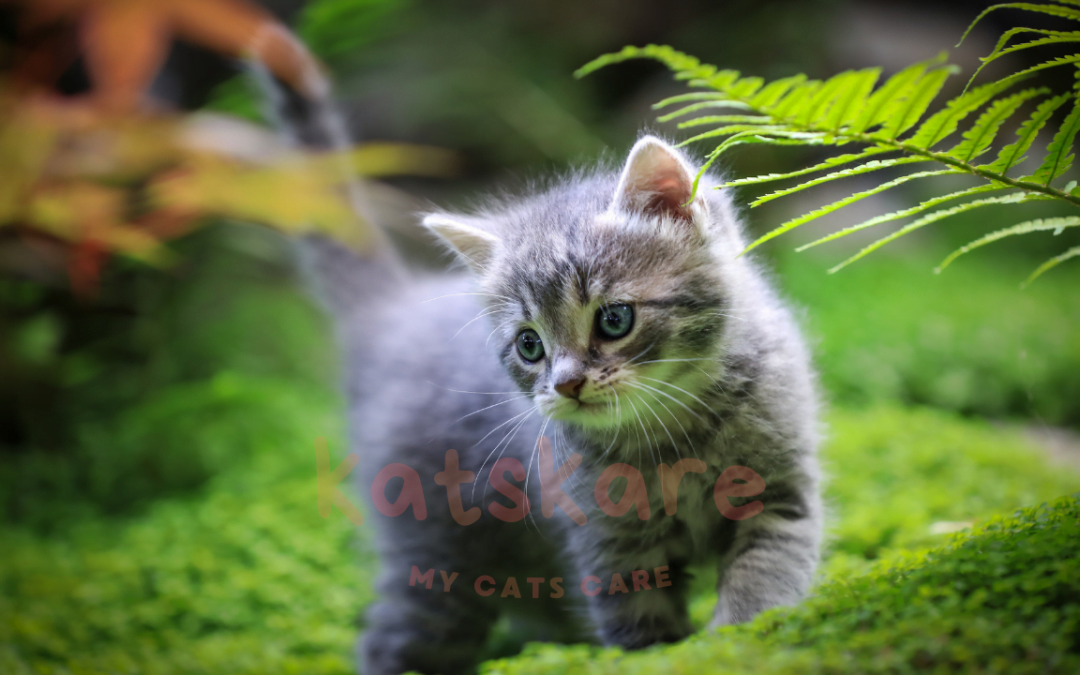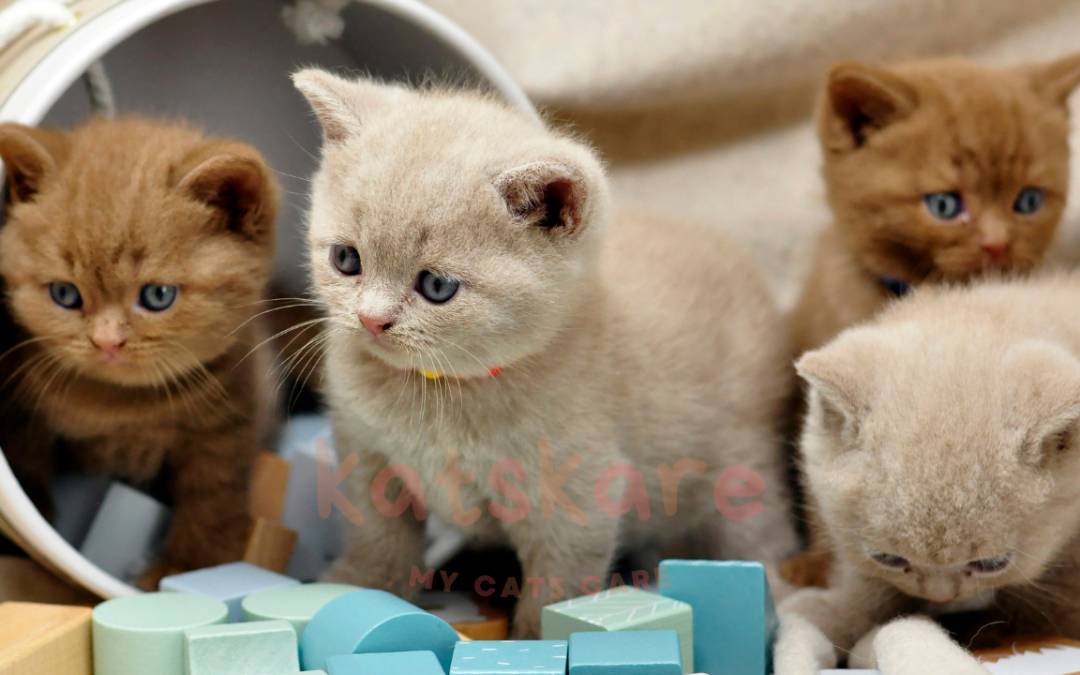
by Muhammed Saeed | Knowledge
Feeding and Nutrition
Q: How often should I feed my cat?
A: Most cats do well on two meals per day, ideally in the morning and evening. Kittens may need more frequent feedings.
Q: Can I feed my cat human food?
A: It’s best to stick to cat food. Some human foods can be toxic to cats, such as onions, garlic, chocolate, and caffeine.
Q: What type of food is best for my cat?
A: A balanced diet of high-quality commercial cat food, either wet or dry, is usually best. Consult your vet for specific dietary needs.
Health and Wellness
Q: How often should I take my cat to the vet?
A: An annual check-up is usually sufficient for most cats, but senior cats or those with health issues may need more frequent visits.
Q: What are common signs that my cat is sick?
A: Look out for changes in appetite, behavior, litter box habits, grooming, and any signs of pain or discomfort.
Q: Do cats need vaccinations?
A: Yes, regular vaccinations are essential to protect your cat from common diseases like rabies, feline distemper, and feline leukemia.
Grooming and Hygiene
Q: How often should I brush my cat?
A: Long-haired cats should be brushed daily, while short-haired cats can be brushed weekly to help reduce shedding and prevent matting.
Q: Do I need to bathe my cat?
A: Cats are generally good at grooming themselves. Baths are rarely necessary unless your cat is dirty or has a skin condition.
Q: How can I keep my cat’s teeth healthy?
A: Regular dental check-ups, dental treats, and brushing your cat’s teeth can help maintain oral health.
Behavior and Training
Q: Why does my cat scratch furniture?
A: Scratching is a natural behavior for cats to mark territory, stretch, and maintain their claws. Provide scratching posts to redirect this behavior.
Q: How can I stop my cat from spraying indoors?
A: Neutering or spaying your cat can reduce spraying. Ensure your cat feels secure and has access to a clean litter box.
Q: Can cats be trained?
A: Yes, cats can be trained using positive reinforcement techniques. Clicker training can be effective for teaching tricks and good behavior.
Environment and Safety
Q: Should I let my cat go outside?
A: It’s safer to keep cats indoors to protect them from traffic, predators, and diseases. If you let your cat outside, supervise them or use a secure outdoor enclosure.
Q: How can I make my home cat-friendly?
A: Provide plenty of toys, scratching posts, and vertical spaces like cat trees. Ensure your home is safe by removing toxic plants and securing windows and balconies.
Q: What is the best way to introduce a new cat to my home?
A: Gradually introduce your new cat to your home and existing pets. Start with a separate room and slowly allow supervised interactions.

by Muhammed Saeed | Knowledge
Kitten-proofing your home is essential to make sure your new furry friend has a safe and happy home. Kittens are curious and love to explore, so it’s important to make sure your home is safe for them. Here are some tips for kitten-proofing your home:
- Remove hazardous items: Kittens can get into a lot of trouble if they come across dangerous objects. Make sure to put away any small items that could be swallowed or get stuck in their mouths, like small pieces of plastic or rubber bands. Also, keep electrical cords out of reach, and make sure any breakable items are out of their reach.
- Secure the doors and windows: Kittens are notorious for escaping and it’s important to make sure they can’t get out. Make sure all doors and windows are securely closed and locked. You may also want to install a cat door so they can go in and out as they please.
- Get rid of toxins: Kittens are especially sensitive to household chemicals, so make sure to remove any potentially toxic items from the home. Avoid using aerosol sprays and cleaners that contain harsh chemicals. Also, make sure your kitten isn’t exposed to any cleaning products or other toxins.
- Provide a safe space: Provide your kitten with a safe space to retreat to when they’re feeling
overwhelmed or scared. This could be a crate, a bed, or a designated area of the home. Make sure the area is quiet, and provide plenty of toys and treats for them to enjoy.
- Supervise: It’s important to keep an eye on your kitten at all times, especially when they’re exploring the home. This will help you make sure they don’t get into anything they shouldn’t.
Kitten-proofing your home is an important step in making sure your new furry friend has a safe and happy home. Following these tips will help you create a safe environment for your kitten and make sure they’re not exposed to any potential hazards.

by Muhammed Saeed | Knowledge
As a pet owner, you may be wondering if it’s necessary to spay or neuter your cat. The answer is a resounding yes! Here are five reasons why spaying or neutering your cat is important:
- Prevent Unwanted Litters: Unwanted litters can end up in shelters, where they can have a hard time finding homes. Spaying or neutering your cat will prevent them from having unwanted litters, thus reducing the number of animals in shelters.
- Improve Behavior: Neutering or spaying your cat can help reduce aggression and other territorial behaviors, such as spraying and fighting. This can make your pet easier to live with and less of a nuisance to you and your neighbors.
- Reduce the Risk of Disease: Spaying or neutering your cat can reduce their risk of certain types of cancer and other health problems.
- Increase Lifespan: Spaying or neutering your cat can increase their lifespan, as it reduces their risk of certain types of cancer and other diseases.
- Save Money: Spaying or neutering your cat can actually save you money in the long run. Unwanted litters can be expensive, as you may need to pay for veterinarian bills, food, and other supplies.
Overall, spaying or neutering your cat is not only important for your pet’s health and safety, but it can also help reduce the number of unwanted litters and help you save money. So, if you’re a pet owner, consider spaying or neutering your cat today!

by Muhammed Saeed | Fun Games
1. String and Feather Toy:
This is a simple and fun toy for kittens. All you need is a string and a feather. Tie the feather to the end of the string and you have a toy that your kittens will love to chase and pounce on.
2. Cardboard Box:
Kittens love to play in boxes. You can cut holes in the sides of a cardboard box to create a fun playhouse for your kittens. They will enjoy jumping in and out of the holes.
3. Paper Ball:
Crumple up a piece of paper into a ball and you have a simple, yet effective toy for your kittens. They will enjoy batting it around and chasing it.
4. DIY Cat Wand:
Use a stick, some string, and a feather or bell to create a fun cat wand. Your kittens will love chasing and jumping after the feather or bell.
5. Cardboard Tube:
Take a cardboard tube from a roll of toilet paper or paper towels, cut it into rings, and you have a fun toy for your kittens. They will enjoy batting the rings around and chasing them.
6. Homemade Catnip Toys:
If your kittens are a little older, they might enjoy catnip toys. You can make your own by sewing a small pouch and filling it with catnip.
7. Sock and Ball:
Take an old sock, put a small ball inside it, and tie a knot at the end. Your kittens will have a blast batting it around.
8. Tissue Paper:
Kittens love the sound and texture of tissue paper. Crumple it up and watch them have fun.
9. Ping Pong Balls:
These lightweight balls are perfect for kittens to bat around and chase.
10. Crumpled Foil:
A simple ball of crumpled foil can provide hours of entertainment for kittens. They love the shiny texture and the noise it makes when they bat it around.
Remember, safety is paramount when making homemade toys for your kittens. Avoid using small parts that could be swallowed, and always supervise playtime to ensure your kittens are playing safely.

by Muhammed Saeed | Knowledge
Cats are beloved companions, but their behaviour can sometimes be confusing. If you’re a new cat parent or have been around cats for years, understanding a feline’s behaviour can be a challenge.
Although cats may not be as easy to read as dogs, there are a few key behaviours that can give you insight into your cat’s feelings.
Cats are creatures of habit. They like their routines and environments to stay consistent. If your cat is acting out or pushing the boundaries, it may be a sign that something is off in their environment. If you’ve recently moved, changed jobs, or added a new pet to the household, your cat may be feeling stressed or anxious.
To help them adjust, try to keep their routines as consistent as possible and provide plenty of love and attention. Cats are also known for being independent and aloof. If your cat seems to be avoiding you, it’s likely because they need some space.
Cats don’t always want to be in the same room with their owners and may prefer to spend their time on their own. That doesn’t mean they don’t love you – they just need some alone time to relax and recharge.
Cats also communicate through body language. If your cat is arching their back, hissing, or growling, it’s a sign that they’re feeling threatened and don’t want to be disturbed. If your cat is sitting upright, purring, and making direct eye contact, it’s a sign that they’re content and wanting your attention.
Finally, cats are very sensitive to touch. If your cat is swatting at you when you try to pet them, it’s a sign that they don’t want to be touched. Try to respect their boundaries and give them some time to get comfortable with you before attempting to pet them again.
By paying attention to your cat’s behaviour, you can gain insight into their emotions and develop a deeper bond. With patience and understanding, you’ll be able to better understand and care for your feline companion.





